With its unmistakable silhouette and striking turquoise finish, the new SB160 is distinctly recognisable as a Yeti. For 2023, the enduro racer of the Colorado-based cult brand has been thoroughly revised and now rolls into the new season with 10 mm more travel than its predecessor, the SB150. Race machine or all-round talent?
For an overview of the test fleet head to the group test: The best enduro bike of 2023 – 14 models in review
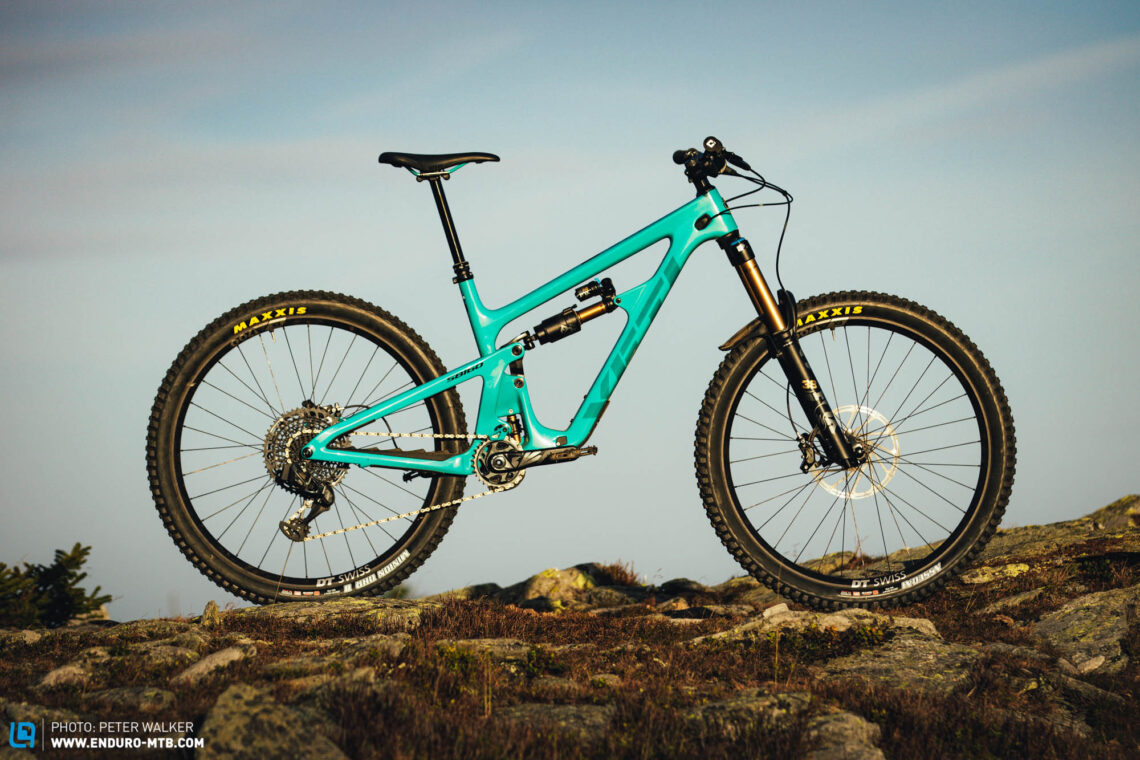
15.6 kg in size L | € 11,990 | Manufacturer’s website
The Yeti SB160 T3 is the most recent release in our 2023 enduro comparison test and also the most expensive analogue bike, retailing at € 11,990. As the name suggests, its rear suspension generates 160 mm travel, which is complemented by a 170 mm fork. The SB160 is the further development of Yeti’s enduro racer, the SB150, and can be found in the Race category on the website of the Colorado based manufacturer. With its unmistakable frame silhouette and proprietary Switch Infinity system, it’s distinctly recognisable as a Yeti. The latter is basically a translating pivot that slides up and down on a set of rails as it goes through its travel, creating a virtual pivot point and providing different suspension characteristics at different points in the travel. The SB160 tips the scales at 15.6 kg and rolls on 29″ wheels like its predecessor.
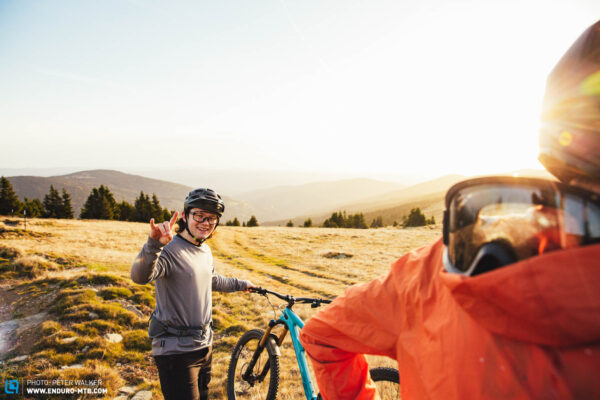


The Yeti SB160 T3 2023 in detail
The cables are securely clamped at the ports, both at the head tube and at the transition from the main frame triangle to the swingarm. Together with the chainstay protector, which now extends all the way along the top of the chainstay and up the seat stay, this ensures a pleasantly quiet ride on the trail. What could at first glance be mistaken for a storage compartment at the bottom of the down tube, is in fact a service port that makes it easier to access and service the internally routed cables. Unlike many manufacturers, Yeti don’t integrate a storage compartment or tool mount into the frame of their bikes. As a result, the Yeti SB160 is the only analogue bike in this test without a tool mount.
The SB160 convinces with impressive build quality and clever detail solutions but renounces a tool mount or storage compartment altogether.
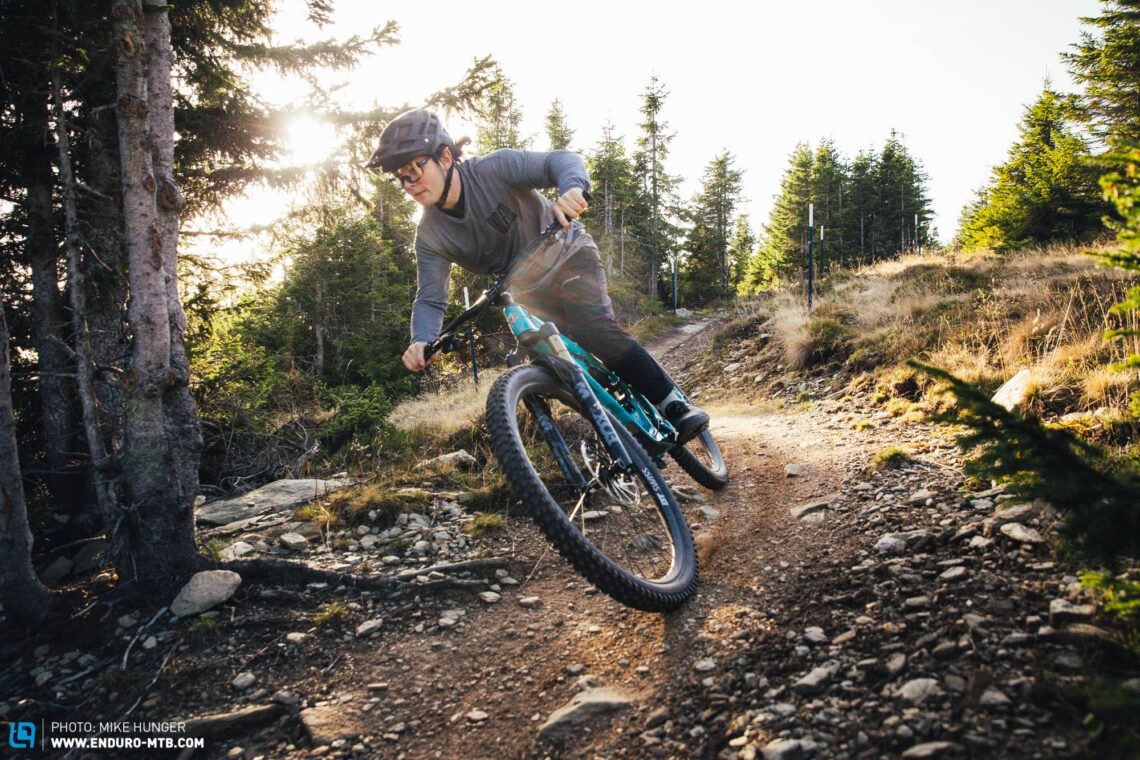
The Yeti loves to get rowdy, combining excellent composure and endless grip.
The spec of the Yeti SB160 T3 in detail
The T3 variant of the Yeti SB160 that we tested won’t be available in Europe, but the European T1 version only differs marginally from its American counterpart, using a cable-operated drivetrain instead of the wireless SRAM AXS drivetrain. The suspension consists of a FOX 38 Factory GRIP2 fork and FOX X2 Factory air shock. SRAM CODE RSC brakes with a massive 220 mm rotor at the front and 200 mm disc at the rear provide powerful and reliable deceleration. Shifting is taken care of by a mixed, wireless 12-speed SRAM AXS drivetrain consisting of a high-end XX1 rear derailleur and cheaper X01 cassette and GX chain. While the cheaper components are slightly heavier than their high-end counterparts, they deliver the same excellent shifting performance on the trail. The FOX Transfer dropper post has a decent 200 mm travel, ensuring plenty of freedom of movement on the bike. The 800 mm carbon handlebars are built in house by Yeti. The SB160 rolls on DT Swiss EX 1700 alloy wheelset, which we have already praised on different occasions in the past. With the premium T models, you’ll be able to upgrade the wheels to a DT Swiss EXC 1501 carbon wheelset. Like most manufacturers in this test, Yeti rely on MAXXIS tires, combining a 29×2.5” ASSEGAI at the front and 29×2.4” Minion DHR II at the rear, both in the thin EXO+ casing and hard MaxxTerra rubber compound. However, a bike in this league deserves more robust tires with MAXXIS’ tough DoubleDown casing and the softer MaxxGrip rubber compound at the front.
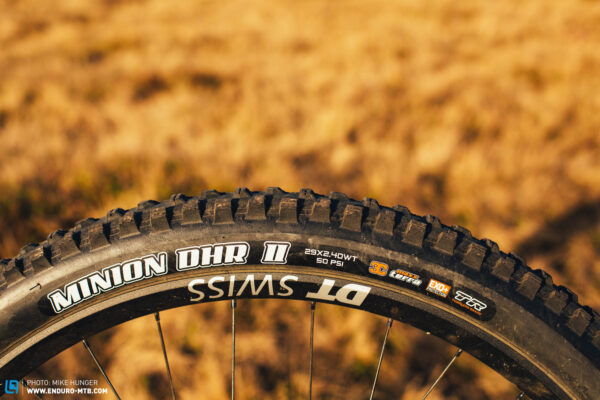
The thin EXO+ tire casing has no place on an enduro racer like the SB160! We recommend upgrading the tires to a more robust casing.
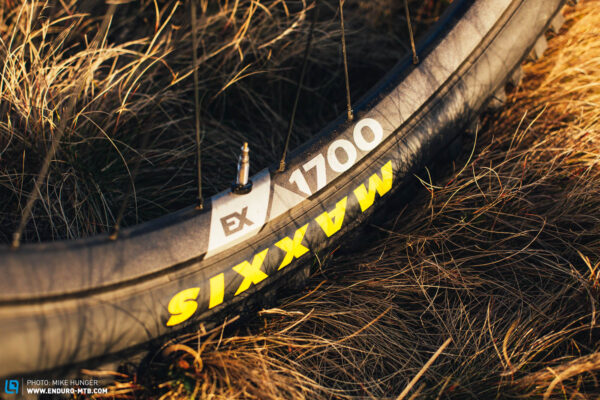
We have already praised the DT Swiss EX 1700 alloy wheelset on several occasions in the past. If you’re in the mood for bling, however, you can upgrade to a DT Swiss EXC 1501 carbon wheelset for an extra charge.

Yeti introduced their proprietary Switch Infinity system back in 2014 and have been using it on all their full-suspension models ever since.

The SRAM CODE RSC brakes of the Yeti pack a punch together with the massive 220 mm rotor at the front.

SRAM’s electronic XX1 AXS rear derailleur suggests a top-end drivetrain but is combined with a cheaper X01 cassette and GX chain.
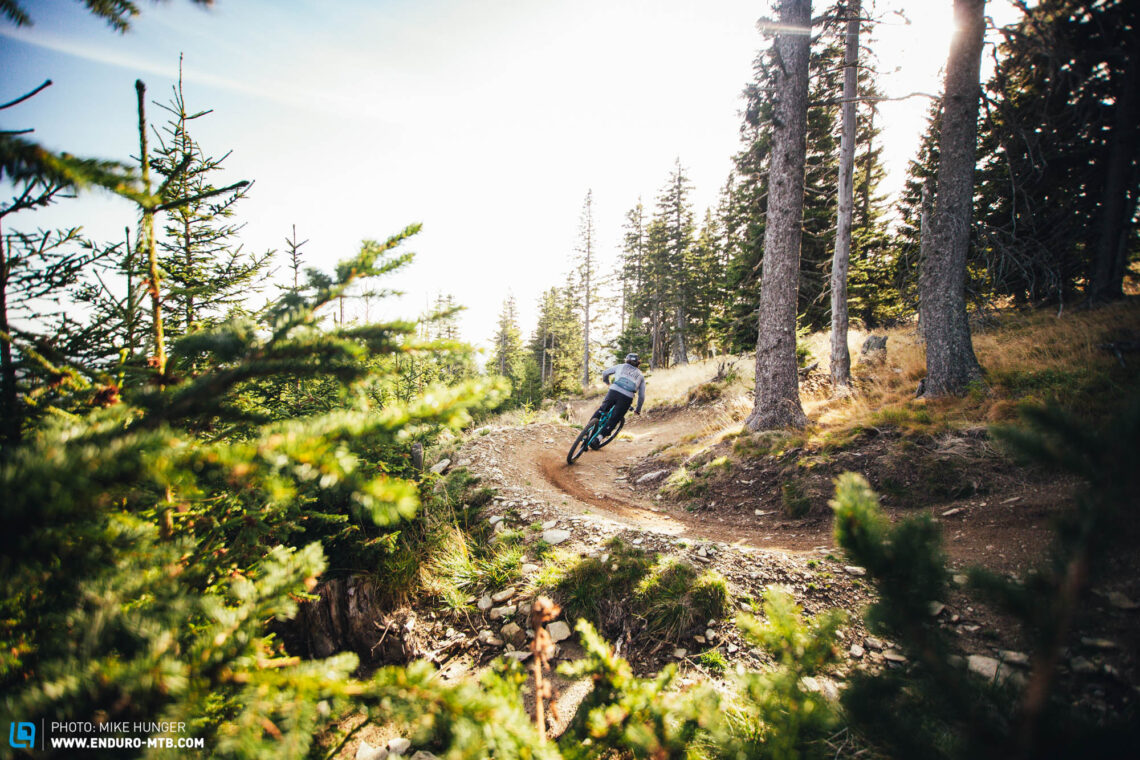
Yeti SB160 T3
€ 11,990
Specifications
Fork FOX 38 Factory GRIP2 170 mm
Rear Shock FOX X2 Factory 160 mm
Seatpost FOX Transfer 200 mm
Brakes SRAM CODE RSC 220/200 mm
Drivetrain SRAM XX1/X01/GX AXS 1x12
Stem Burgtec Enduro MK3 50 mm
Handlebar Yeti Carbon 800 mm
Wheelset DT Swiss EX 1700 29"
Tires MAXXIS ASSEGAI, EXO+, 3C MaxxTerra/MAXXIS Minion DHR II, EXO+, 3C MaxxTerra 2.5/2.4
Technical Data
Size S M L XL XXL
Weight 15.6 kg
The geometry of the Yeti SB160 2023
The Yeti SB160 is available in a total of five sizes, S to XXL, which is one more size compared to its predecessor, the SB150. According to Yeti, this should cover all riders between 155 cm and 210 cm tall. Our test bike in size L combines 485 mm reach and a pleasantly short 440 mm seat tube, which ensures plenty of freedom of movement together with the long travel dropper post that can be fully inserted into the frame. Chainstays are 441 mm in size L and grow with the frame size, providing consistent handling across all sizes.
| Size | S | M | L | XL | XXL |
|---|---|---|---|---|---|
| Seat tube | 365 mm | 400 mm | 440 mm | 470 mm | 485 mm |
| Top tube | 571 mm | 602 mm | 624 mm | 651 mm | 670 mm |
| Head tube | 95 mm | 101 mm | 107 mm | 118 mm | 140 mm |
| Head angle | 64° | 64° | 64° | 64° | 64° |
| Seat angle | 77.5° | 77.5° | 77.5° | 77.5° | 77.5° |
| Chainstay | 437 mm | 439 mm | 441 mm | 443 mm | 445 mm |
| Wheelbase | 1,211 mm | 1,246 mm | 1,270 mm | 1,302 mm | 1,329 mm |
| Reach | 435 mm | 465 mm | 485 mm | 510 mm | 525 mm |
| Stack | 615 mm | 620 mm | 625 mm | 635 mm | 655 mm |

The Yeti SB160 T3 on the trail
The Yeti SB160 T3 is a solid climber. The rear end bobs minimally and only requires you to reach for the climb switch on long, monotonous gravel climbs. The pedalling position is comfortably central and the weight is evenly distributed between the front and rear, keeping the front wheel tracking evenly on steep climbs. As for climbing performance, the Yeti can be compared to the short-travel Specialized Stumpjumper EVO.

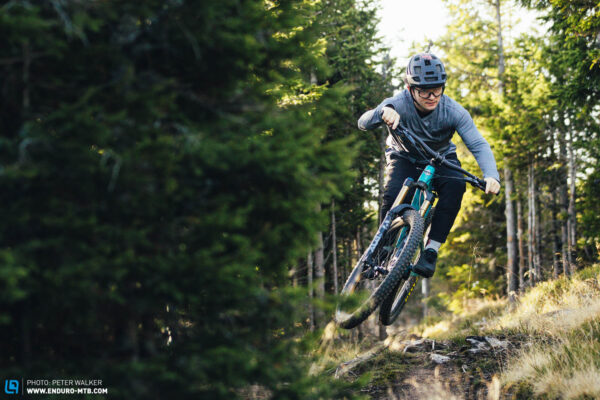
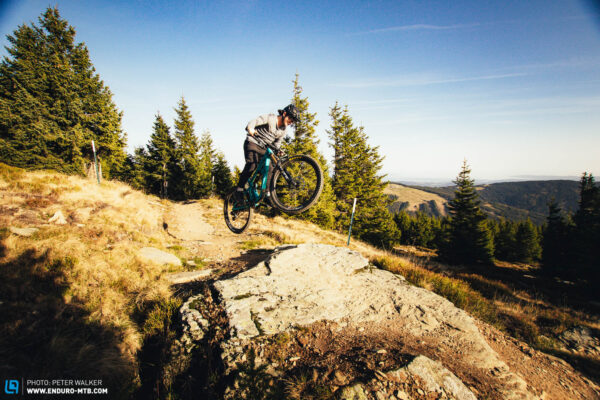
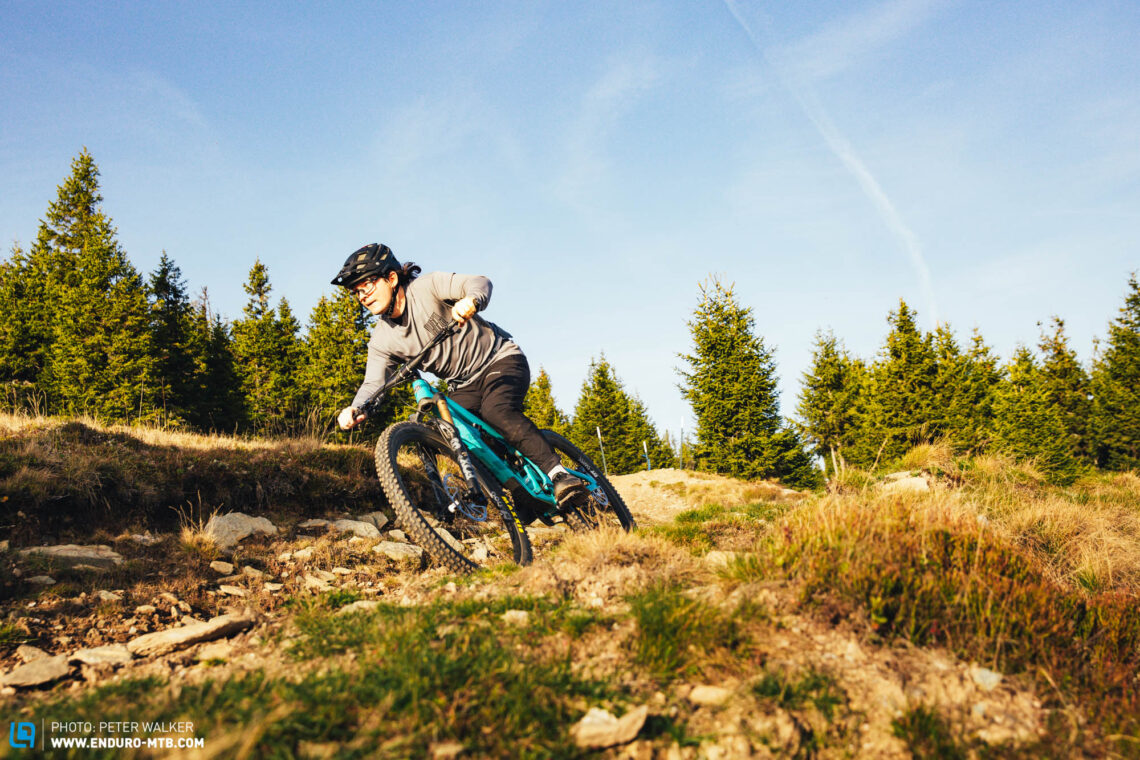
With its intuitive handling and agile character, the SB160 is also an excellent allrounder.
With the Yeti SB160, you shred your way into the valley faster than with any other bike in this test. Although the suspension is super supple, the bike is agile and intuitive to ride.
With the Yeti, the real fun starts when you drop into the valley. Downhill, the SB160 is the most agile bike in the entire test field and responds to steering inputs quickly and with extreme precision, encouraging you to spontaneously change your line and flick the rear end from one corner into the next. At the same time, the Yeti is easy and intuitive to ride, making you feel at ease from the moment you swing your leg over the saddle, thus allowing you to safely shred your way back to the car park even after a long, exhausting day in the saddle. Moreover, the Yeti impresses with its awesome suspension, which responds sensitively in all situations, glueing the bike to the trail and allowing you to commit to bold highlines without breaking a sweat. The suspension also generates tons of traction in open corners and loose terrain, which the Yeti negotiates faster than any other bike in this test. However, the SB160 doesn’t provide a plush sofa feeling like the Norco Range, for example. On flat trail sections, you’ll have to actively weight the front wheel to keep it tracking, but swapping the tires to a softer rubber compound at the front and more robust casing will solve this problem and improve traction.
Tuning tip: More robust tire casing front and rear and softer rubber compound at the front

Conclusion
While the SB160 T3 falls into Yeti’s Race category, it’s capable of a lot more. Despite the poor choice of tires, it delivered the best trail performance in the entire test field. The sensitive suspension works efficiently, gluing the bike to the ground without ever feeling sluggish. Overall, the SB160 is nimbler than any of its competitors and yet incredibly composed and intuitive to ride, thus uniting supposed opposites like no other bike in this test. The best enduro bike for 2023!
Tops
- Most impressive suspension in the entire test field
- Excellent allrounder
- Extremely nimble
- Top handling, easy and intuitive
Flops
- Tires don’t live up to the potential of the bike
You can find out more about at yeticycles.com
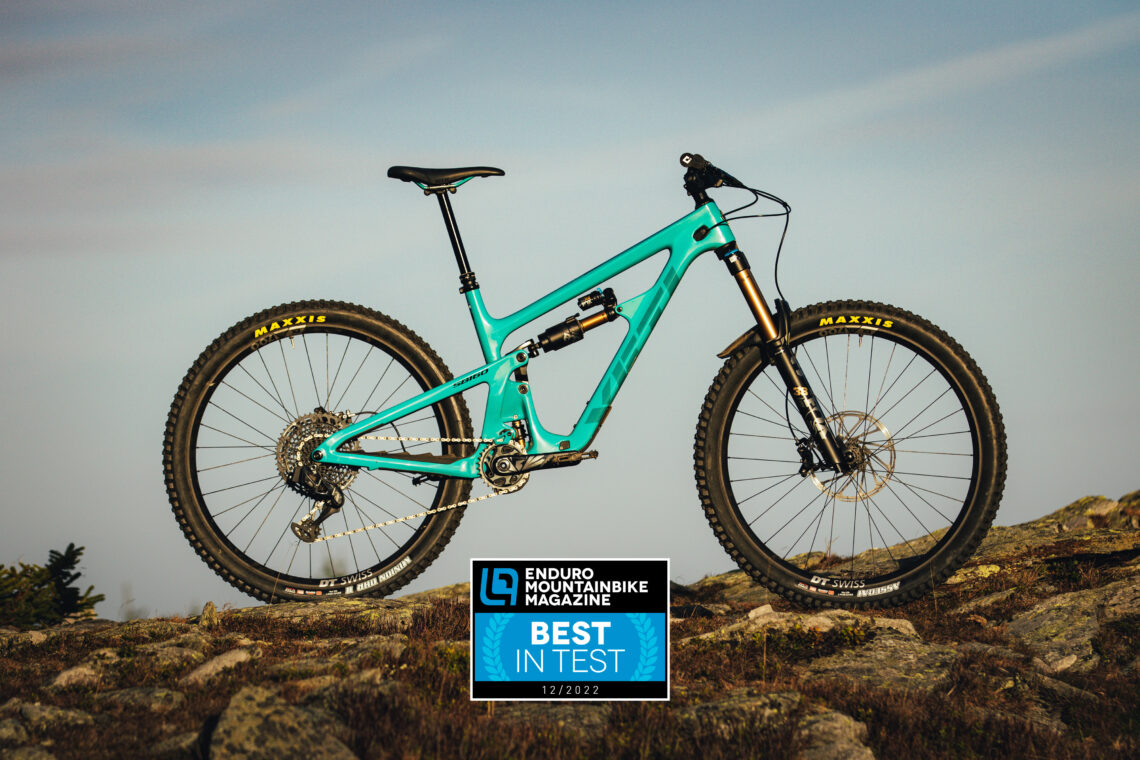
The test field
For an overview of the test fleet head to the group test: The best enduro bike of 2023 – 14 models in review
All bikes in test: Canyon Strive CFR 8 (Click for review) | Deviate Claymore (Click for review) | Hope HB916 (Click for review) | Intense Tracer 279 S (Click for review) | MERIDA ONE-SIXTY 8000 (Click for review) | Mondraker Carbon Foxy RR (Click for review) | Norco Range C1 (Click for review) | Santa Cruz Megatower X01 AXS RSV (Click for review) | Santa Cruz Nomad X01 AXS RSV (Click for review) | SIMPLON Rapcon 170/165 (Click for review) | SIMPLON Rapcon Pmax TQ 170/165 (Click for review) | Specialized Stumpjumper EVO Elite Alloy (Click for review) | Yeti 160E T1 (Click for review) | Yeti SB160 T3
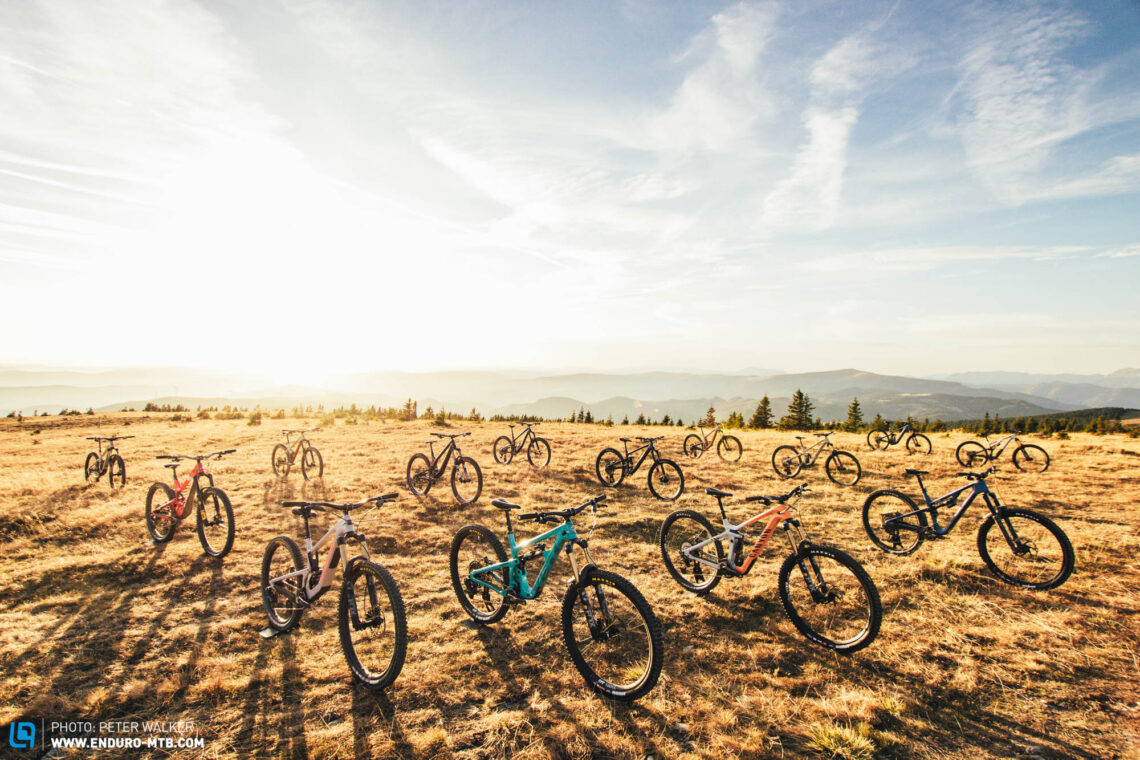
Did you enjoy this article? If so, we would be stoked if you decide to support us with a monthly contribution. By becoming a supporter of ENDURO, you will help secure a sustainable future for high-quality mountain bike journalism. Click here to learn more.
Words: Simon Kohler Photos: Peter Walker, Mike Hunger









